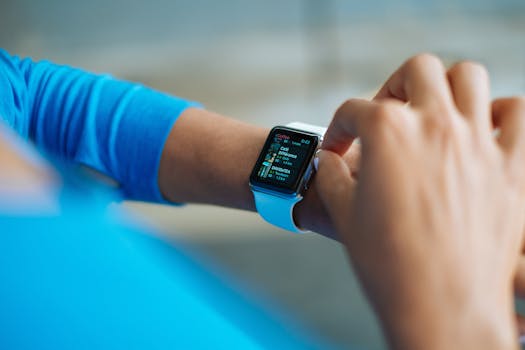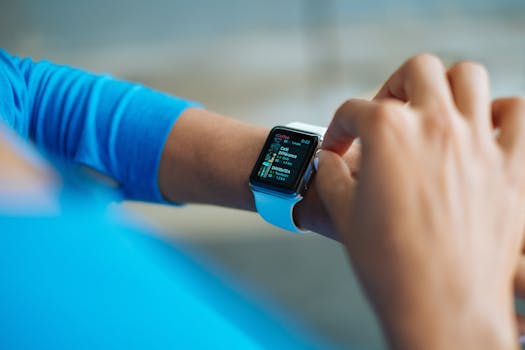Understanding Your Needs: Matching Smartwatch Features to Your Daily Routine
When selecting the right smartwatch for your lifestyle, it is essential to begin by understanding your individual needs and how a smartwatch can complement your daily routine. With a wide array of models available on the market, each offering a unique combination of features, the key to making an informed decision lies in identifying which functionalities align most closely with your personal habits, professional demands, and health goals.
To start, consider your primary reason for wanting a smartwatch. For many, fitness tracking is a top priority. If you lead an active lifestyle, look for a device that offers comprehensive health monitoring features such as heart rate tracking, step counting, sleep analysis, and GPS functionality. Athletes and fitness enthusiasts may also benefit from advanced metrics like VO2 max, workout recognition, and compatibility with third-party fitness apps. On the other hand, if your routine is more sedentary or office-based, a smartwatch that emphasizes productivity tools—such as calendar integration, email notifications, and voice assistant support—may be more appropriate.
Equally important is the smartwatch’s compatibility with your existing devices. Most smartwatches are designed to work best within specific ecosystems. For instance, Apple Watches are optimized for iPhone users, while Wear OS devices are more suitable for Android users. Ensuring seamless integration with your smartphone will enhance the overall user experience, allowing for smoother synchronization of data, notifications, and apps.
Battery life is another critical factor to consider. If your schedule involves long hours away from a charging source, a smartwatch with extended battery life—ranging from several days to even weeks—can be a practical choice. Conversely, if you are accustomed to charging your devices nightly, a model with a shorter battery life but more advanced features may still suit your needs.
Design and comfort should not be overlooked, especially if you plan to wear the smartwatch throughout the day. Consider the size, weight, and strap material of the device. A sleek, lightweight model may be ideal for everyday wear, while a more rugged design could be better suited for outdoor activities or manual labor. Additionally, customizable watch faces and interchangeable bands can offer a level of personalization that aligns with both your aesthetic preferences and functional requirements.
Furthermore, think about the level of water resistance you may need. If your daily routine includes swimming, running in the rain, or exposure to water in any form, choosing a smartwatch with a high water-resistance rating is advisable. This ensures durability and longevity, even in challenging environments.
Lastly, evaluate the importance of additional features such as contactless payments, music storage, and emergency SOS functions. These can add convenience and peace of mind, particularly for individuals who prefer to leave their phone behind during workouts or errands.
In conclusion, choosing the right smartwatch involves a careful assessment of your lifestyle and how specific features can support your daily activities. By aligning the device’s capabilities with your personal and professional needs, you can select a smartwatch that not only enhances your productivity and well-being but also integrates seamlessly into your everyday life.
Fitness, Fashion, or Functionality: Choosing a Smartwatch That Fits Your Lifestyle

When selecting a smartwatch, it is essential to consider how it aligns with your lifestyle, particularly in terms of fitness, fashion, and functionality. With the growing variety of models available on the market, each offering a unique combination of features and design elements, making an informed decision requires a clear understanding of your personal priorities and daily habits. Whether you are a dedicated athlete, a style-conscious professional, or someone seeking a practical digital companion, identifying your primary needs will help narrow down the options and ensure long-term satisfaction with your purchase.
For individuals who prioritize fitness, the ideal smartwatch should offer comprehensive health and activity tracking capabilities. Features such as heart rate monitoring, GPS tracking, sleep analysis, and workout recognition are essential for those who engage in regular physical activity. Additionally, water resistance is a crucial consideration for swimmers or those who train in various weather conditions. Some models even include advanced metrics like blood oxygen levels, VO2 max, and ECG functionality, which can provide deeper insights into overall health and performance. Battery life is another important factor, especially for users who participate in long-distance sports or prefer not to charge their device daily. Therefore, fitness-focused users should look for a smartwatch that not only tracks their activities accurately but also supports their training goals with reliable performance and durability.
On the other hand, fashion-conscious consumers may place greater emphasis on the aesthetic appeal of a smartwatch. In this case, design elements such as case material, strap options, and display quality become more significant. Many smartwatches now offer customizable watch faces and interchangeable bands, allowing users to tailor the device to match different outfits or occasions. Sleek profiles, premium finishes, and minimalist interfaces can enhance the overall look, making the smartwatch a stylish accessory in both casual and formal settings. Furthermore, compatibility with popular fashion brands or designer collaborations may appeal to those who view their smartwatch as an extension of their personal style. While these models may still offer fitness and productivity features, the primary focus remains on visual appeal and seamless integration with one’s wardrobe.
For users who value functionality above all else, the emphasis should be on productivity tools, connectivity, and ease of use. Smartwatches in this category often include features such as voice assistants, message and call notifications, calendar integration, and contactless payment options. These tools can significantly enhance daily efficiency, particularly for professionals who need to stay connected without constantly checking their phones. Operating system compatibility is another key consideration, as some smartwatches work best within specific ecosystems, such as Apple’s watchOS or Google’s Wear OS. Additionally, users should evaluate the app ecosystem and whether the smartwatch supports third-party applications that align with their needs. A functional smartwatch should serve as a seamless extension of the user’s digital life, offering convenience and utility throughout the day.
Ultimately, choosing the right smartwatch involves balancing these three aspects—fitness, fashion, and functionality—based on your individual lifestyle. By carefully assessing which features matter most to you and how you intend to use the device, you can select a smartwatch that not only meets your expectations but also enhances your daily routine.
Operating Systems and Compatibility: Ensuring Your Smartwatch Works with Your Devices
When selecting the right smartwatch for your lifestyle, one of the most critical factors to consider is the operating system and its compatibility with your existing devices. A smartwatch is not a standalone gadget; rather, it functions as an extension of your smartphone, offering seamless integration for notifications, apps, and health tracking. Therefore, ensuring that your smartwatch’s operating system aligns with your smartphone’s platform is essential for optimal performance and user experience.
To begin with, the two dominant smartphone operating systems—iOS and Android—play a significant role in determining which smartwatches are compatible with your device. Apple’s watchOS, for instance, is designed exclusively for iPhones. This means that if you own an iPhone, the Apple Watch is the most compatible and feature-rich option available. It offers deep integration with iOS, including access to Apple’s native apps, Siri, and features like Handoff and iMessage. However, it is important to note that the Apple Watch does not support Android devices, which limits its usability for non-iPhone users.
On the other hand, Google’s Wear OS is a more versatile platform that supports both Android and iOS devices, although it functions more effectively with Android smartphones. Wear OS smartwatches offer access to Google Assistant, Google Maps, and a wide range of third-party apps through the Google Play Store. While iPhone users can still use Wear OS devices, they may experience limited functionality, such as restricted messaging capabilities and reduced app integration. Consequently, Android users will benefit more from the full suite of features that Wear OS provides.
In addition to these major platforms, there are other proprietary operating systems to consider. Samsung’s Galaxy Watch series, for example, previously ran on Tizen OS but has recently transitioned to a version of Wear OS co-developed with Google. This change enhances compatibility with Android devices while still offering limited support for iOS. Similarly, Huawei and Fitbit use their own operating systems—HarmonyOS and Fitbit OS, respectively—which are optimized for their ecosystems. While these platforms may offer unique features such as extended battery life or specialized health tracking, they may not support the same breadth of third-party apps or seamless integration with all smartphones.
Moreover, it is crucial to evaluate the level of synchronization between your smartwatch and smartphone. Features such as call and text notifications, calendar syncing, and app alerts depend heavily on compatibility. Some smartwatches may offer only basic notification support when paired with an incompatible device, which can significantly diminish their utility. Therefore, checking the manufacturer’s compatibility guidelines before making a purchase is a prudent step.
Another aspect to consider is the availability of software updates and long-term support. A smartwatch that receives regular updates not only benefits from new features but also maintains security and performance over time. Devices that are tightly integrated with their respective ecosystems—such as the Apple Watch with iOS or Samsung’s Galaxy Watch with Android—are more likely to receive consistent updates.
In conclusion, choosing a smartwatch that aligns with your smartphone’s operating system is fundamental to ensuring a smooth and functional user experience. By understanding the compatibility between devices and the capabilities of different operating systems, you can make an informed decision that enhances both convenience and connectivity in your daily life.



